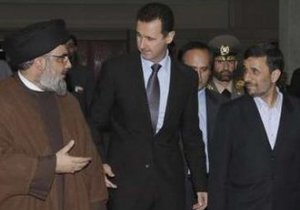 When Mubarak fell, Iran’s leaders moved out with swagger. They saw one pivotal U.S. ally gone, and perceived an opportunity to exploit unrest to undermine other pro-Western regimes, especially Saudi Arabia. They sought to develop contacts with Islamists in Egypt and Libya, expand ties to opposition movements in Yemen, and capitalize on the indigenous Shiite protests in Bahrain. And Iran’s leaders seemed confident that Syrian President Bashar al-Assad’s regime, Tehran’s state ally in the Middle East, was immune from the populist wave because of its militant stance toward Israel and the United States.
When Mubarak fell, Iran’s leaders moved out with swagger. They saw one pivotal U.S. ally gone, and perceived an opportunity to exploit unrest to undermine other pro-Western regimes, especially Saudi Arabia. They sought to develop contacts with Islamists in Egypt and Libya, expand ties to opposition movements in Yemen, and capitalize on the indigenous Shiite protests in Bahrain. And Iran’s leaders seemed confident that Syrian President Bashar al-Assad’s regime, Tehran’s state ally in the Middle East, was immune from the populist wave because of its militant stance toward Israel and the United States.
One year later, however, it is hard to find evidence that Iran has benefited from the Arab uprisings. In fact, Iran’s regional position has taken a big hit. With the partial exception of Yemen, Tehran has struggled to build new networks of influence with emerging Islamist actors. Meanwhile, Assad’s regime has been thoroughly delegitimized, expelled from the Arab League, and is wobbling in the face of nationwide protests. This, in turn, has created considerable anxiety for Hezbollah, the Lebanese militia that constitutes Iran’s chief non-state ally.
The perception of Iranian meddling has also decimated Tehran’s “soft power” appeal across the Arab world. Surveys conducted in Egypt, Jordan, Lebanon, Morocco, Saudi Arabia, and the United Arab Emirates by Zogby International show Iran’s reputation in free fall since the Arab Spring began. Just a few years ago, Iran enjoyed a strong majority of support among the populations of all these countries; as of July 2011, Iran had a net unfavorable rating in every country but Lebanon.
The Atlantic
Leave a Reply
You must be logged in to post a comment.